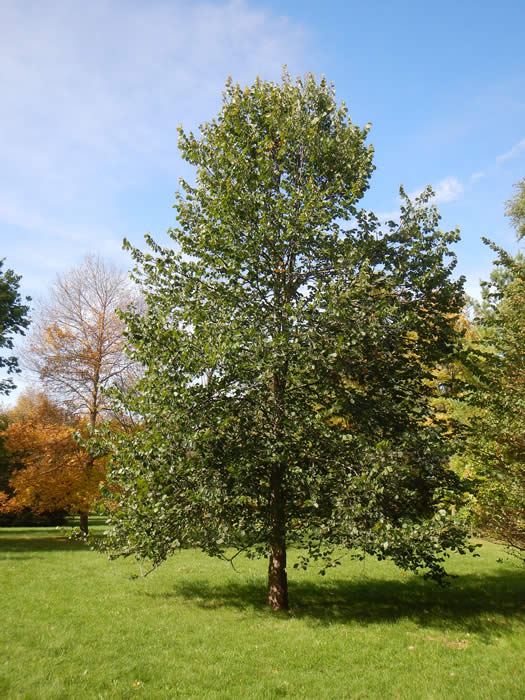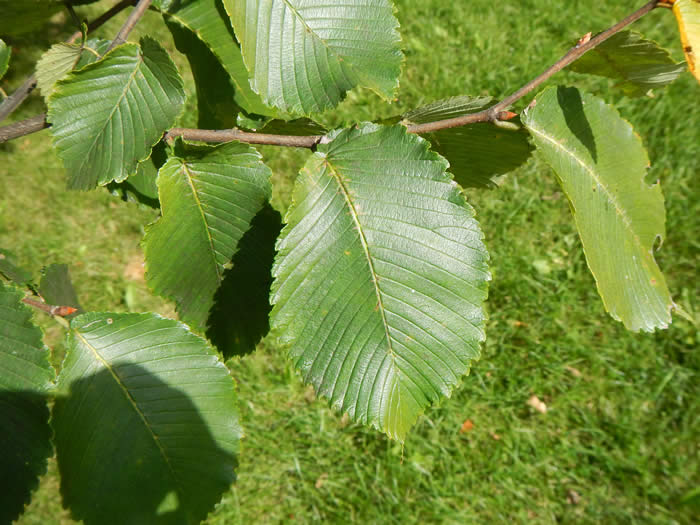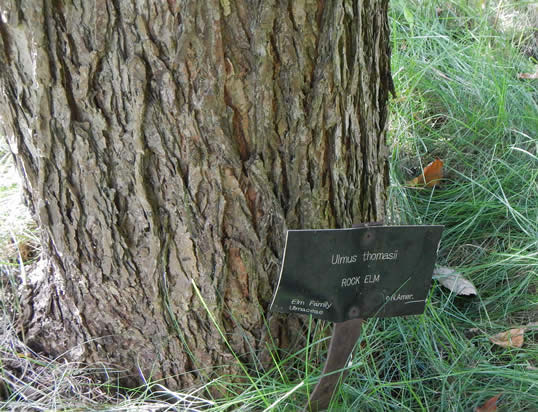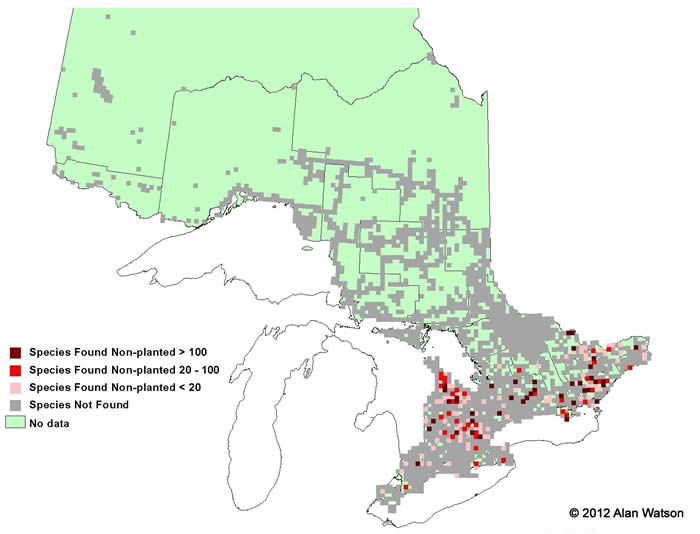Rock Elm - Ulmas thomasii
Rock elm is a rare tree, which is easily recognized by the irregular corky ridges on its branches. This species is the hardest, heaviest, strongest, and toughest among the elms. Due to its strength and dependability, its wood was formerly used to make piano frames and hockey sticks; however, it is no longer available in commercial quantities. Quick recognition features of the Rock Elm include its fruit entirely covered in hair, shiny dark green leaves and sharp-pointed plump buds.

The Rock Elm is a medium-sized tree, up to 25 m tall, 75 cm in diameter, and 175 years old. Many of the branches of this elm are drooping or crooked, giving this tree a rough and shaggy appearance. Photo by Chris Earley.

Rock Elm leaves are 5-10 cm long, leathery, and dark green on the surface and somewhat hairy on the underside. The leaves are bright yellow in autumn. Photo by Chris Earley.

Its bark is dark grey in colour with a tinge of red. The bark is also shaggy with many interrupted furrows. The Rock Elm has a mottled look to it, similar to that of the White Elm. Photo by Chris Earley.

Ontario Tree Atlas map of non-planted Rock Elm. 1995-1999.
References
Farrar, J.L.. 1995. Trees in Canada. Fitzhenry & Whiteside Ltd. Toronto. ON. 504 pp.
Kershaw, L. 2001. Trees in Ontario: Including tall shrubs. Lone Pine Publishing. Edmonton. AB. 240 pp
Muma, W. 2011. Ontario Trees and Shrubs. [Online] Available: www.ontariotrees.com
OMNR, 2011. Ontario Ministry of Natural Resources: Ontario Tree Atlas. [Online] Available: http://www.mnr.gov.on.ca/en/Business/ClimateChange/2ColumnSubPage/267027.html
OMNR, 2008. Ontario’s Biodiversity: Species at Risk.